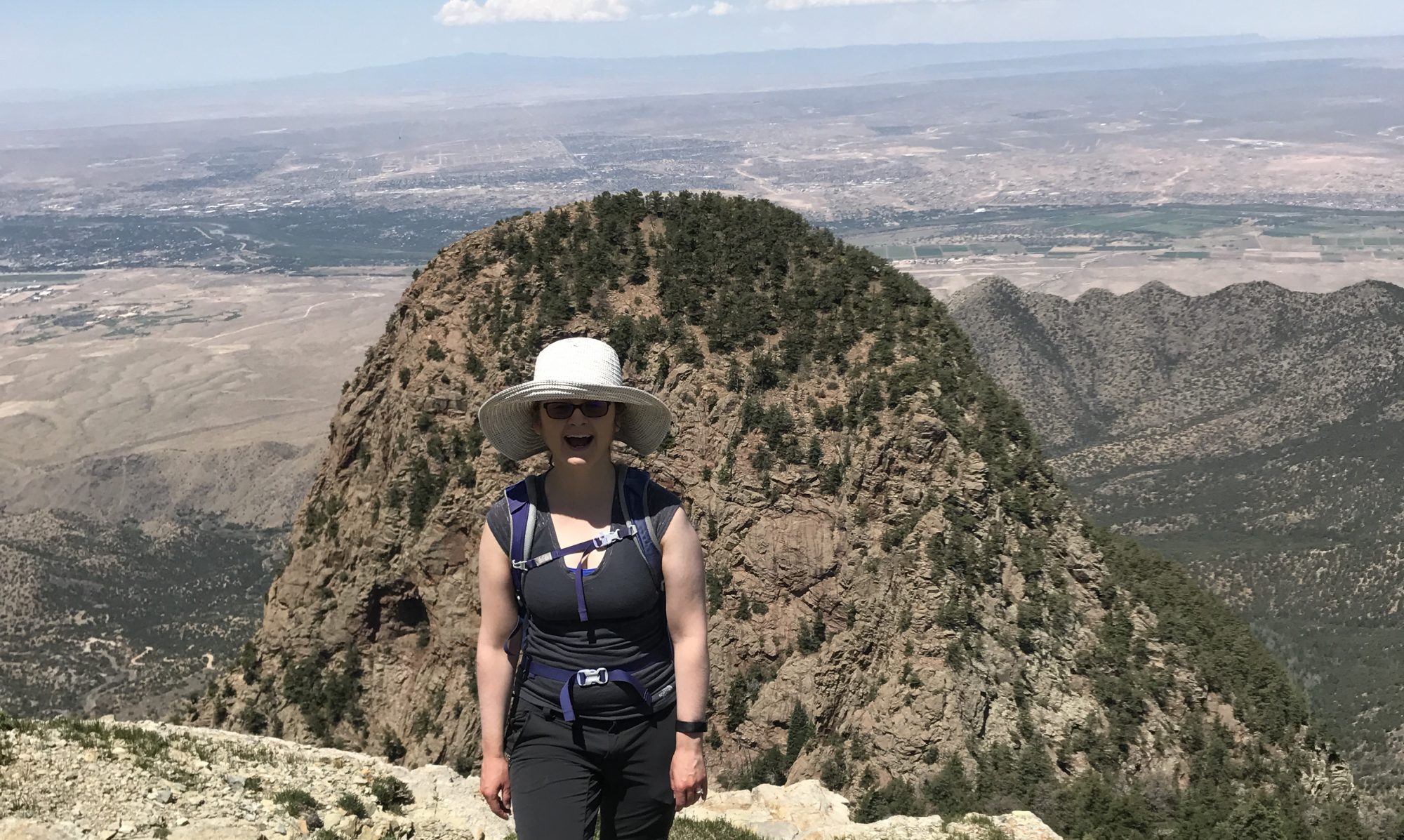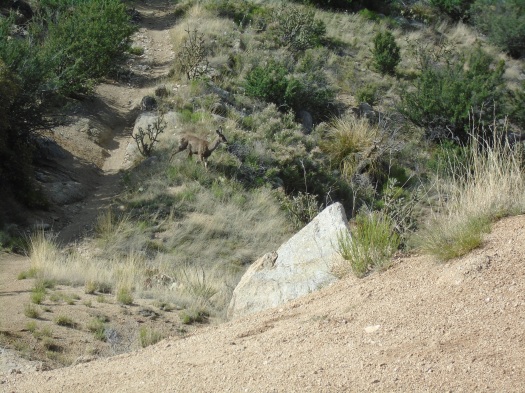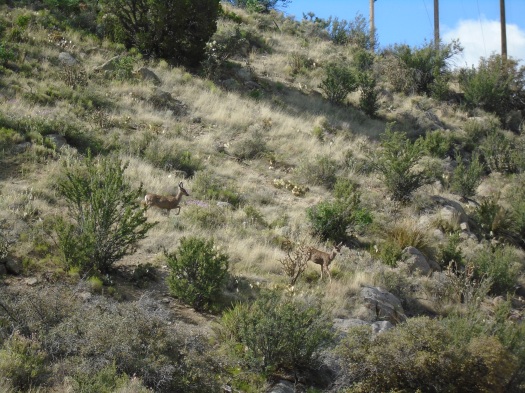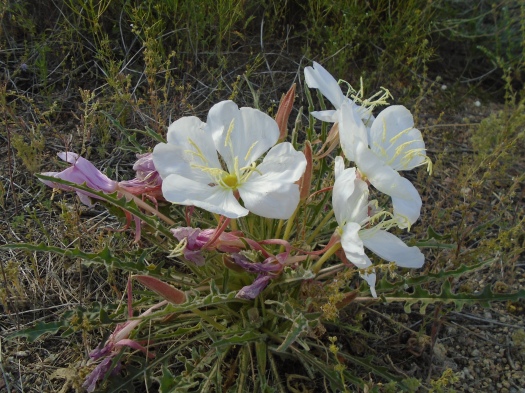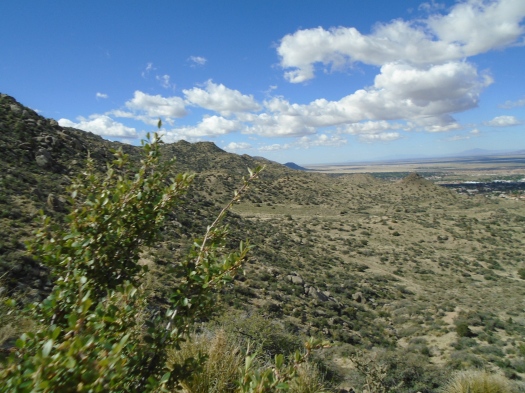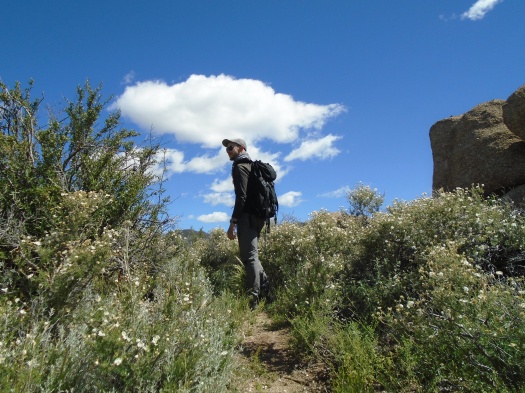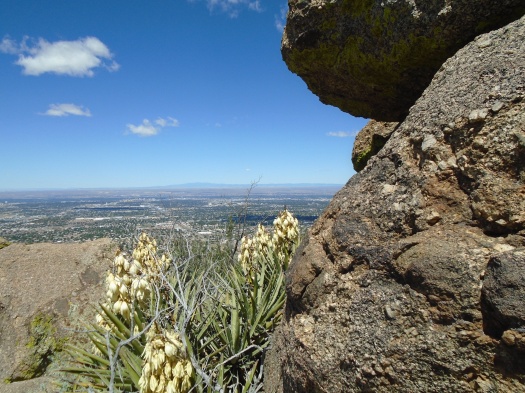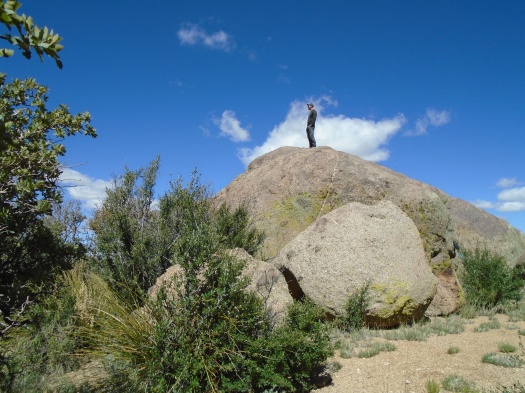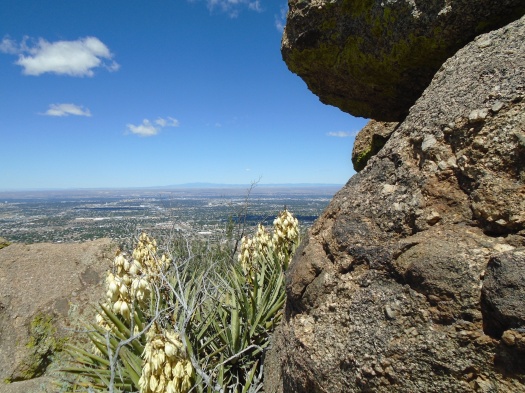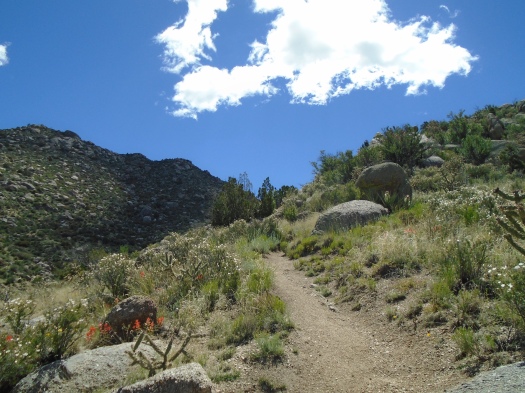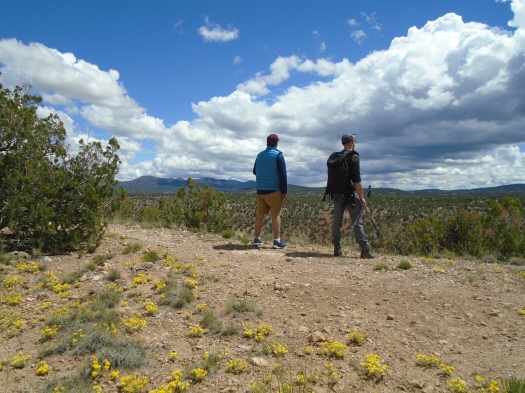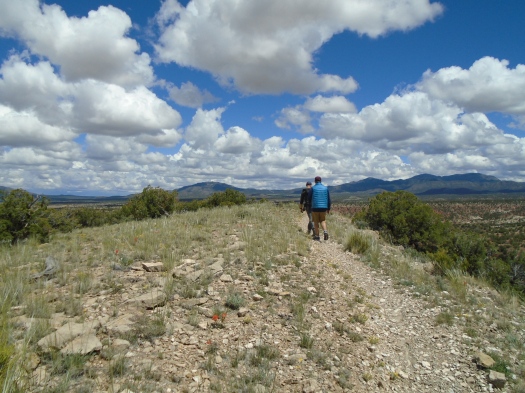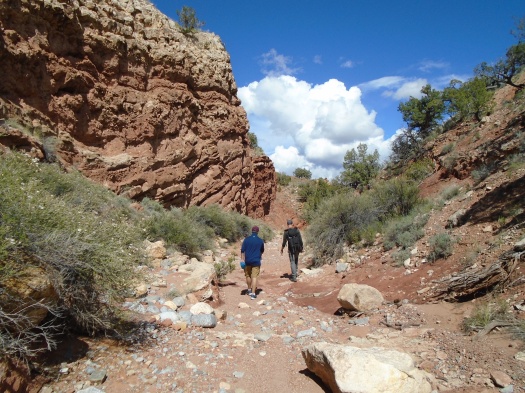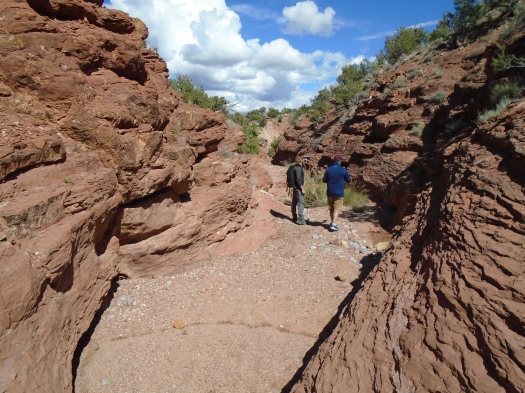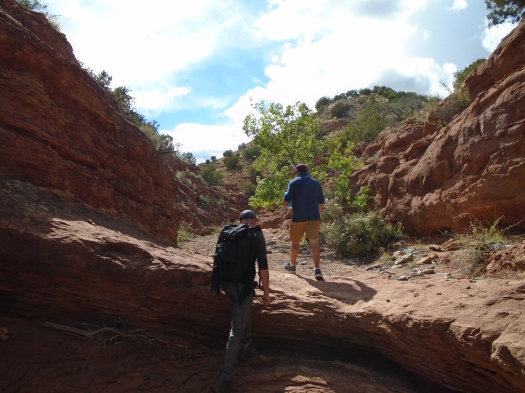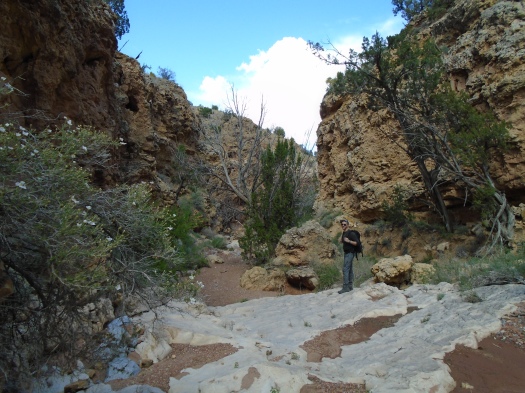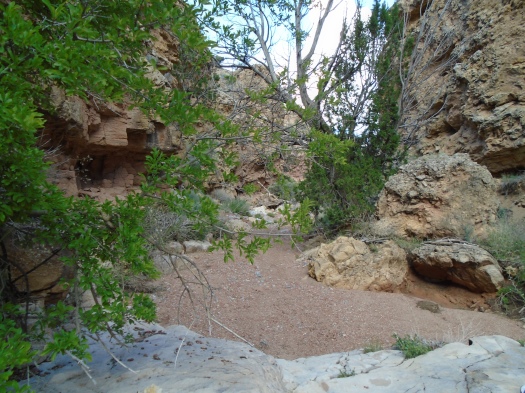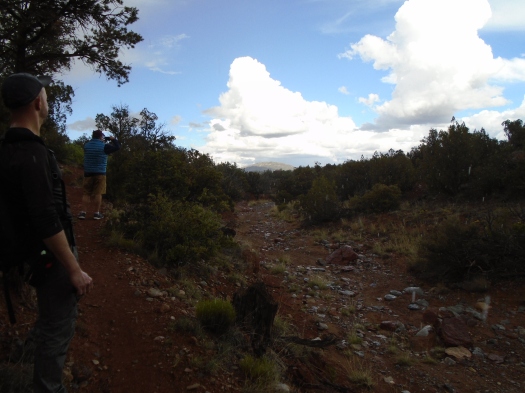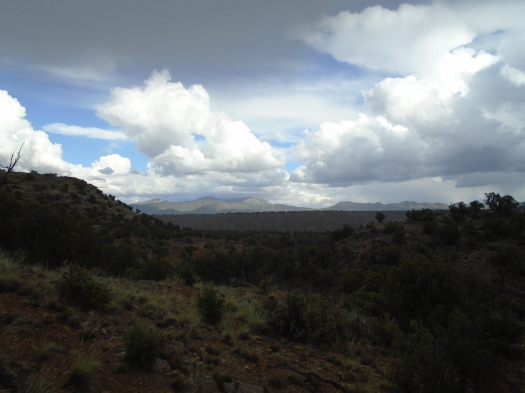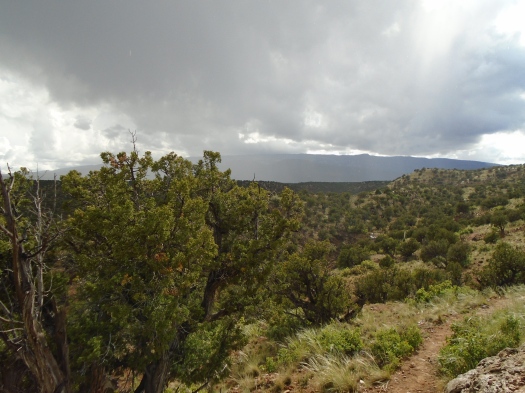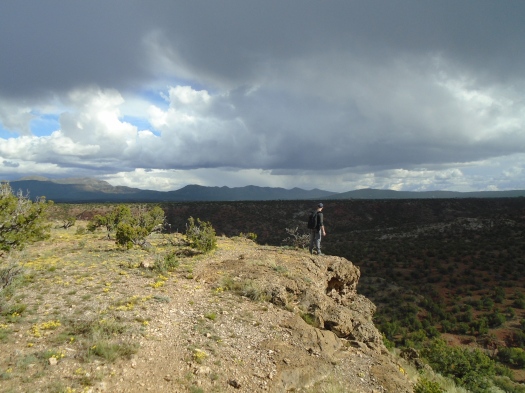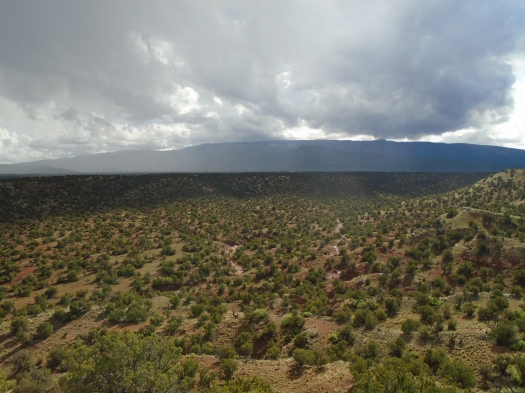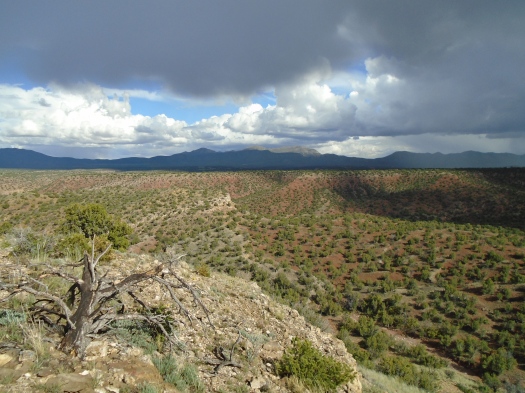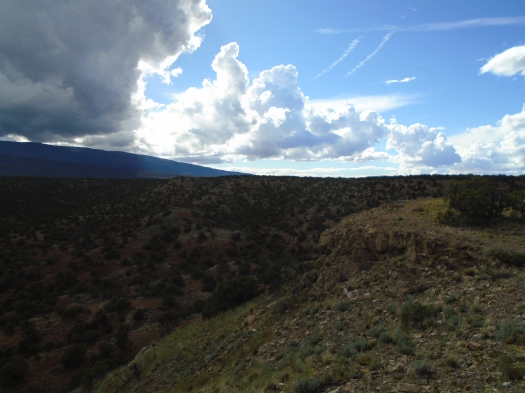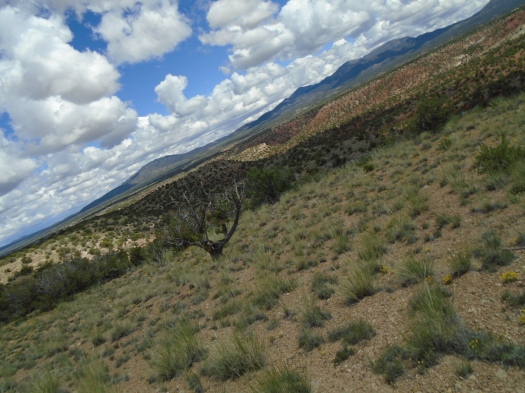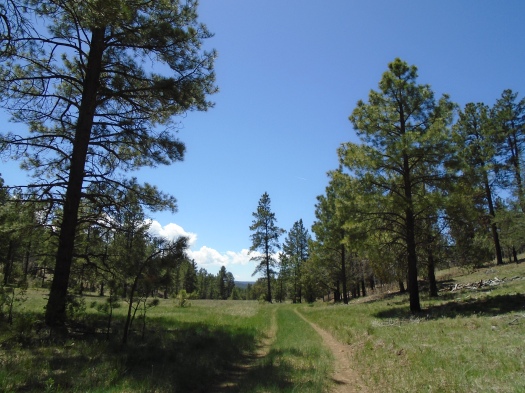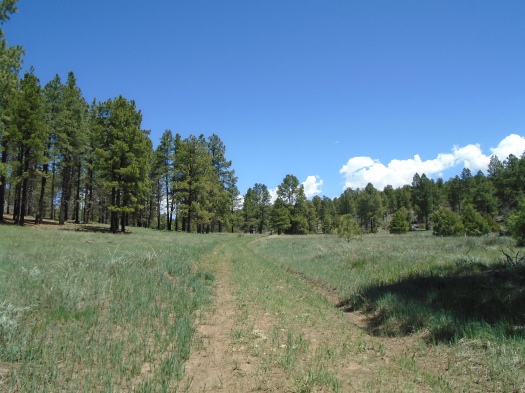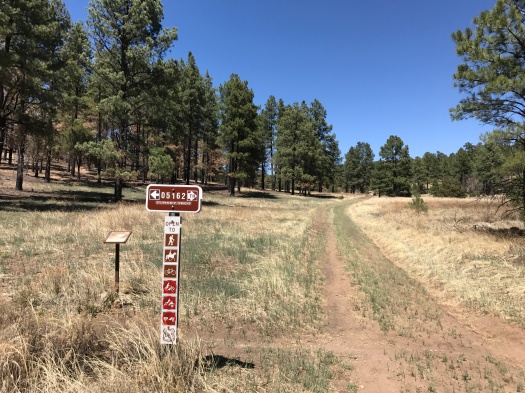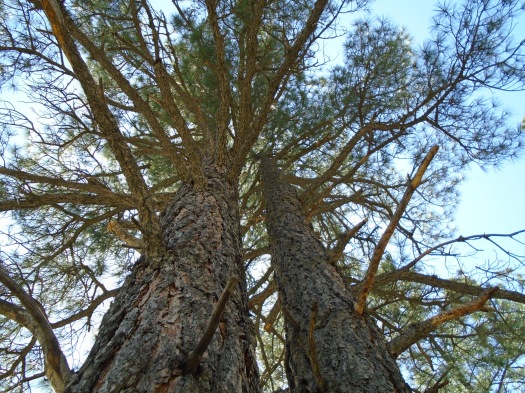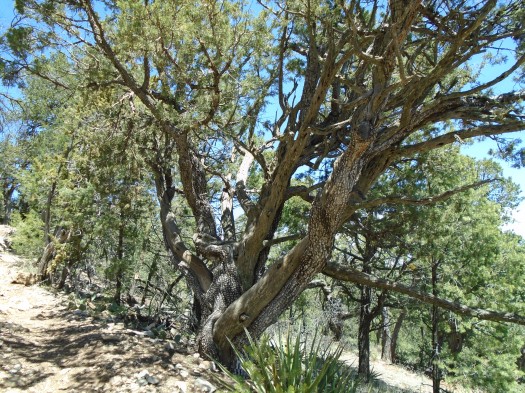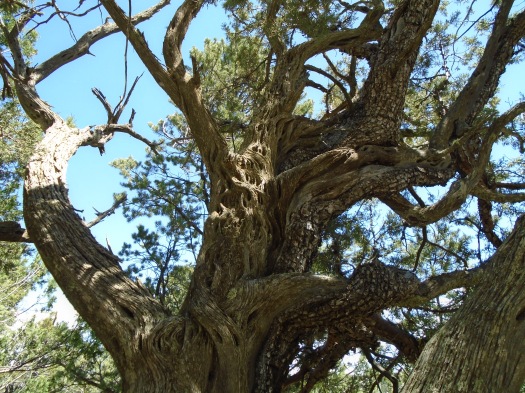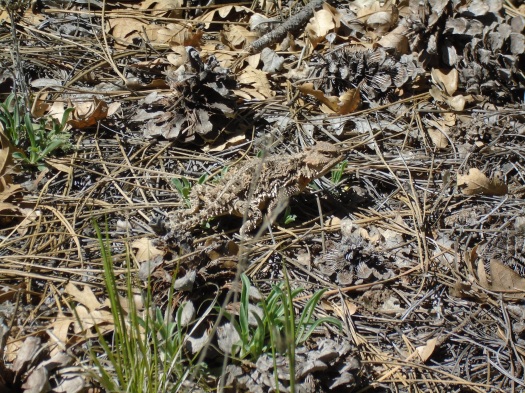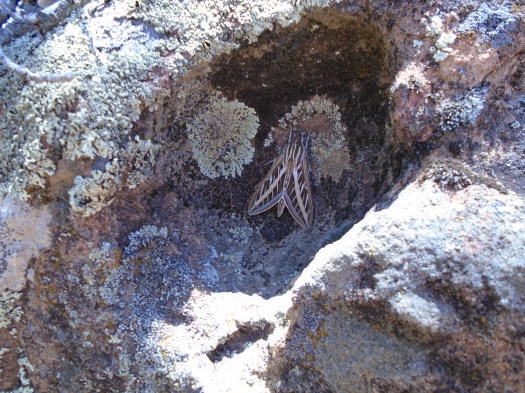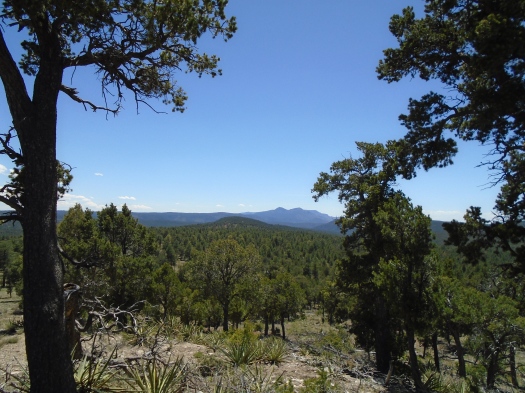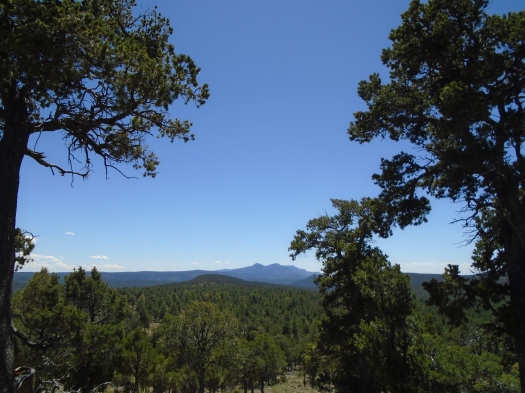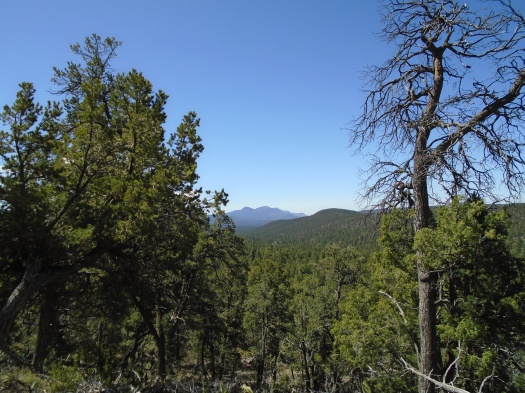What this route lacks: a place to step off the trail and cry.
A single flat boulder about three-quarters of the way up could serve that purpose. By then, you can practically see the top of the trail, though you might cry over how far away it still is.
We’re on the Ojo del Orno Route in Placitas. This shortcut accesses a gorgeous ridgeline by bypassing the first 2.6 miles of the Sandia Crest Trail’s northern section.
Remember, though, Mama told you: there are no shortcuts.
This trail maintains what feels like a 50-degree angle for its entire mile. It seems to switchback every few feet, instead of every few hundred feet. Its rocky surface means you often slip backward (ie down) when you brace to take the next giant step up. It’s hard to remove your eyes from your feet.
But when I managed to do so today, I saw shoulder-high wild rose. I saw deciduous trees glow in the sun. I saw enormous bulges of rock rise above us and, when I could look down, an amazing amount of canyon accumulate below us. Near the top of the arroyo, trees with sweet-smelling white blossoms lined the path.
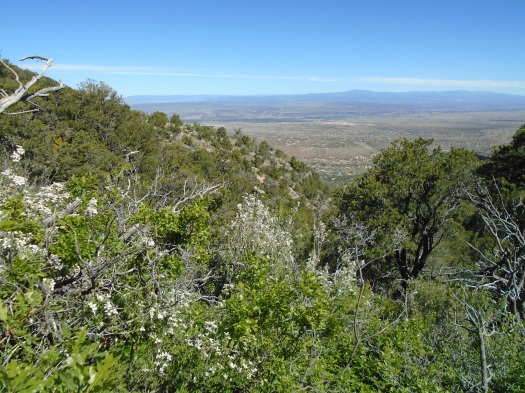
At last the ridgeline. A little further, a rock wall that overlooks Santa Ana Pueblo’s green-topped mesas.
My husband stretched out on the rock wall in the sun. Twenty minutes later, he showed no signs of leaving.
I could barely see the jagged Ortiz Mountains through the trees on the other side of the trail, though, and I wanted more.
I headed just a little further, then a little more, then a little more. The Ortiz popped into view, then the Sangre de Cristos another 30 miles away, dusted with fresh snow on May 25.
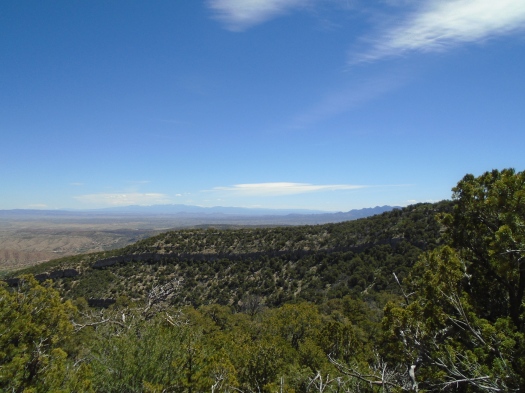
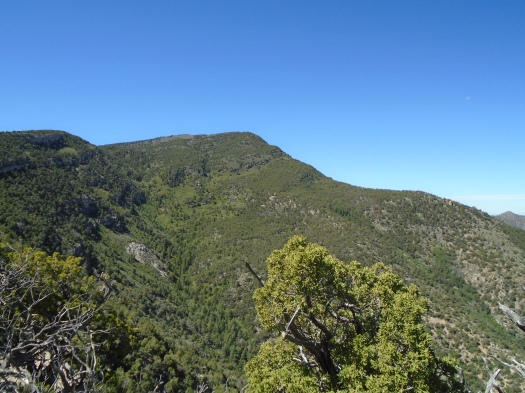
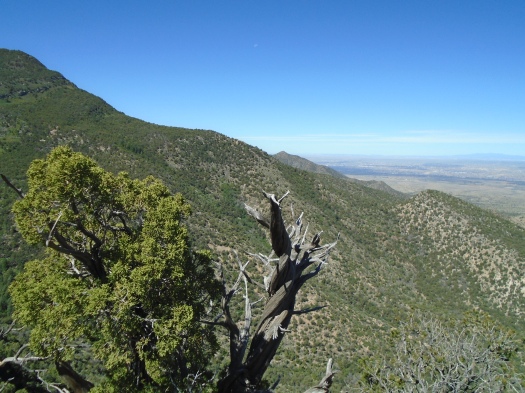
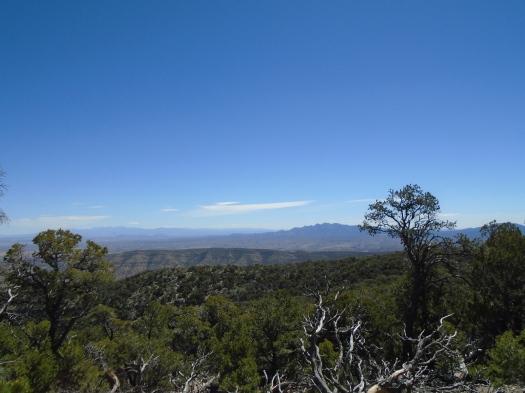
I went so far my husband came looking for me, thinking I might somehow have gotten off trail.
We retraced our steps, bypassing the Ojo del Orno, since descending it was unthinkable. The Crest Trail squeezed against a cool rock wall that rose high into the sky.
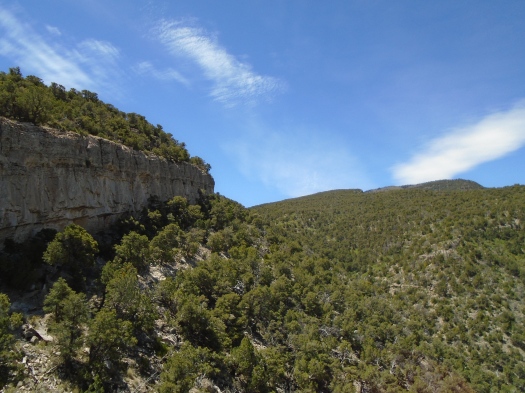
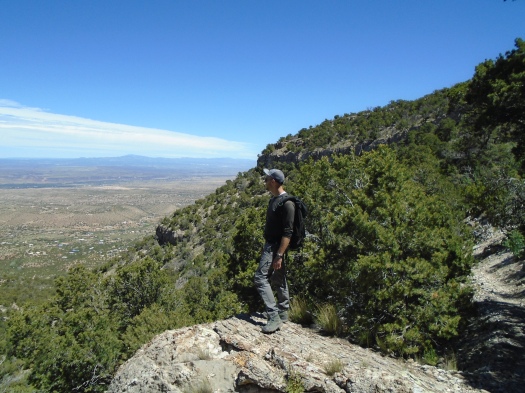
Our guidebook says many people find the first three and a half miles of the Crest Trail boring.
“It’s boring,” said the fellow we met in the parking lot.
This is false. What is true: the first part of the Crest Trail is incredibly hot. The rock wall provided the day’s last real shade. The air temperature was only around 72, but the trail was still blazing.
We saw the rumpled hills of Placitas, and a mystery black-capped red ridge further beyond. We saw tiny purple flowers with yellow centers blaze from the earth, electric-yellow cactus.
I have no pictures of any of it. I was hustling, desperate to get out of the sun. I privately cursed every sun-loving family we had to stop and let pass us on their way up. I wanted only one thing, and it was back at the trailhead.
At last we reached it; a gargantuan cottonwood fed by Tunnel Spring. We crossed the road to put our sweaty hands into the cold water. The spring gurgled from a pipe that periodically croaked like a frog.
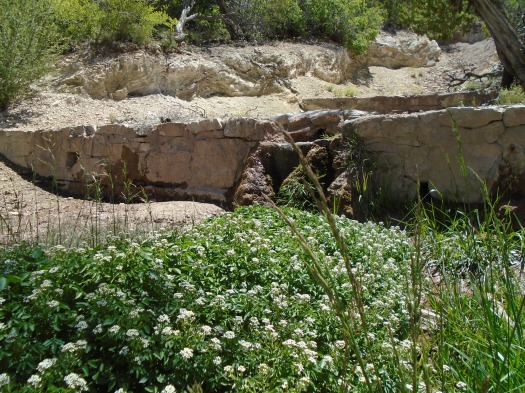
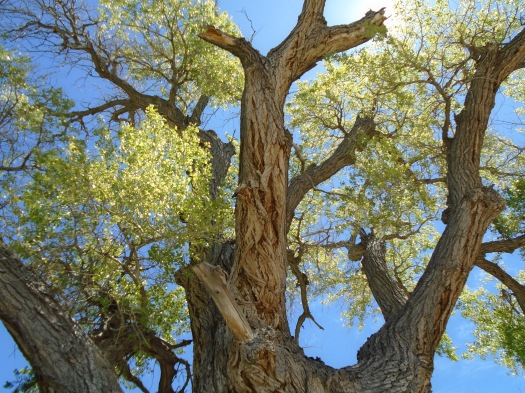
I knew the canyon fed by this spring must be stunning right now. I’ve been there. Years ago, we went up Ojo del Orno, climbed another 1,500 feet to the top of the ridge, then came very slowly down through the outrageously steep, densely wooded Agua Sarca Canyon. I could barely use my legs for two days after that.
I’ll do it again.
When it’s 50 degrees.
Hike length: 6.5 miles
Difficulty: moderate
Trail traffic: moderate
Wildlife spotted/heard: hawk, lizards, pinyon jays, bluejays, butterflies, cicadas, doves
THINGS YOU SHOULD KNOW IF YOU DO THIS HIKE:
-The dirt road from Placitas Highway 165 to the trailhead is only 1.4 miles. How bad can it be? TERRIBLE. It was already bad, and this year’s rain and snow have carved enormous chunks out of it. We took my little car up there. BAD MOVE. Take a high-clearance vehicle.
-The co-author of the new edition of “60 Hikes Within 60 Miles of Albuquerque” told me at a Q&A that he took Tunnel Spring out of the book because the first few miles of the Crest Trail have some very narrow ledges that he was uncomfortable on with his dogs.
-Speaking of narrow ledges, I would not go anywhere near this road or this area’s steep terrain in wet or icy weather.
-All of that said, this area has some of the most beautiful terrain in the entire Sandias. If it sounds like fun to you, you should go soon. Local homeowners are raising heck with the Forest Service and Sandoval County about the condition of the road-rightfully so. When that happens, it sometimes leads to road access to a trailhead being closed. I have no hard evidence that this will happen at Tunnel Spring, but I fear it could.
